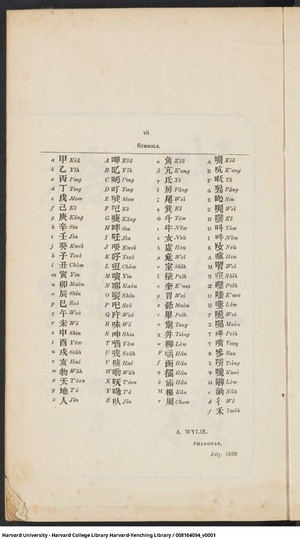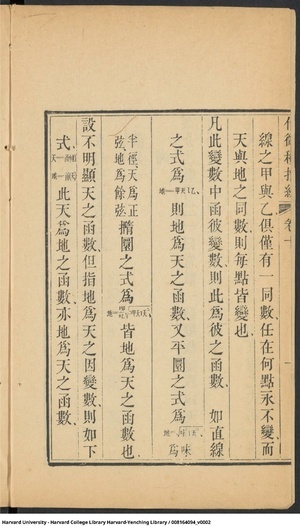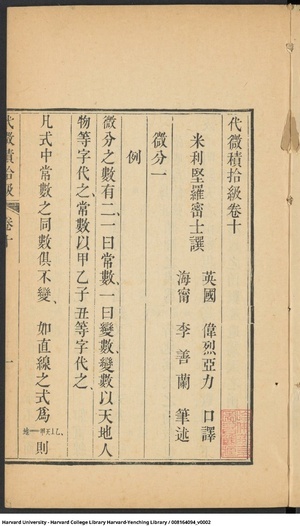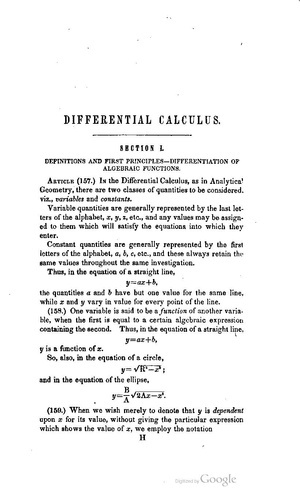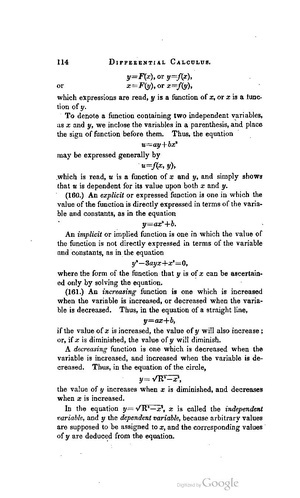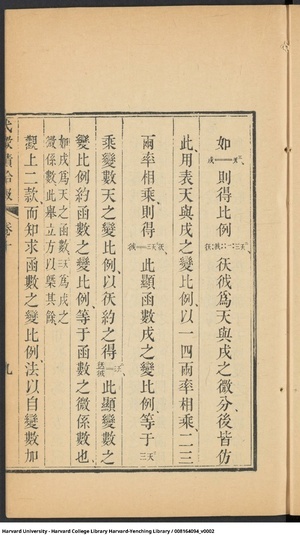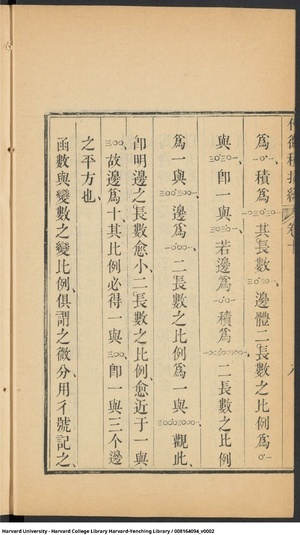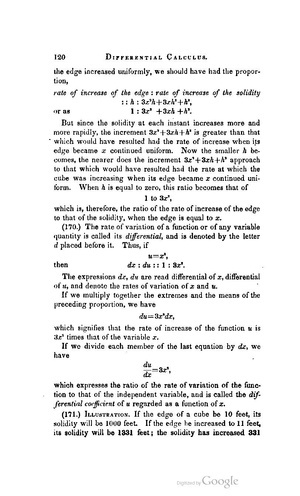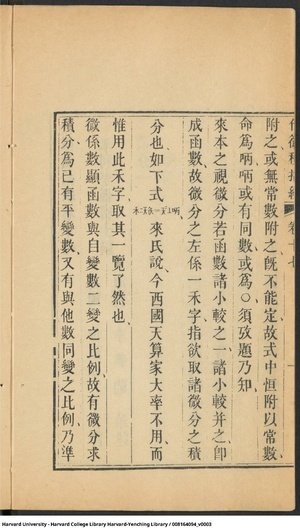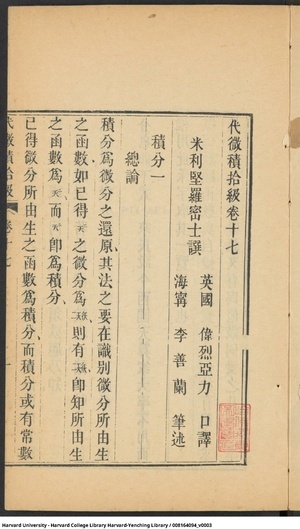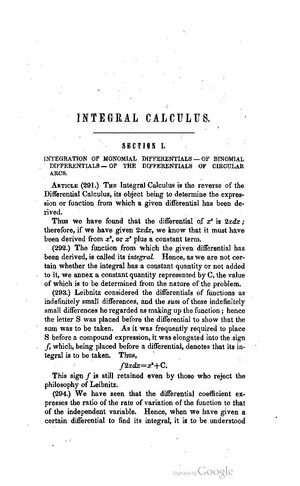A
RTICLE (157.) I
N the Differential Calculus, as in Analytical Geometry, there are two classes of quantities to be considered, viz.,
variables and
constants.
Variable quantities are generally represented by the last letters of the alphabet,
x,
y,
z, etc., and any values may be assigned to them which will satisfy the equations into which they enter.
Constant quantities are generally represented by the firstletters of the alphabet,
a,
b,
c, etc., and these always retain the same values throughout the same investigation.
Thus, in the equation of a straight line,
[math]\displaystyle{ y=ax+b }[/math],
the quantities a and b have but one value for the same line, while
x and
y vary in value for every point of the line.
(158.)
One variable is said to be a function of another variable, when the first is equal to a certain algebraic expression containing the second. Thus, in the equation of a straight line
[math]\displaystyle{ y=ax+b }[/math],
y is a function of
x.
So, also, in the equation of a circle,
[math]\displaystyle{ y=\sqrt{R^2-x^2} }[/math];
and in the equation of the ellipse,
[math]\displaystyle{ y=\frac{B}{A}\sqrt{2Ax-x^2} }[/math].
(159.) When we wish merely to denote that
y is
dependent upon
x for its value, without giving the particular expression which shows the value of
x, we employ the notation
[math]\displaystyle{ y=F(x) }[/math], or [math]\displaystyle{ y=f(x) }[/math],
or[math]\displaystyle{ x=F(y) }[/math], or [math]\displaystyle{ x=f(y) }[/math],
which expressions are read,
y is a function of
x, or
x is a function of
y.
[取自Elements of Analytical Geometry and of The Differential and Integral Calculus, Differential Calculus, Section I, Definitions and First Principles]


